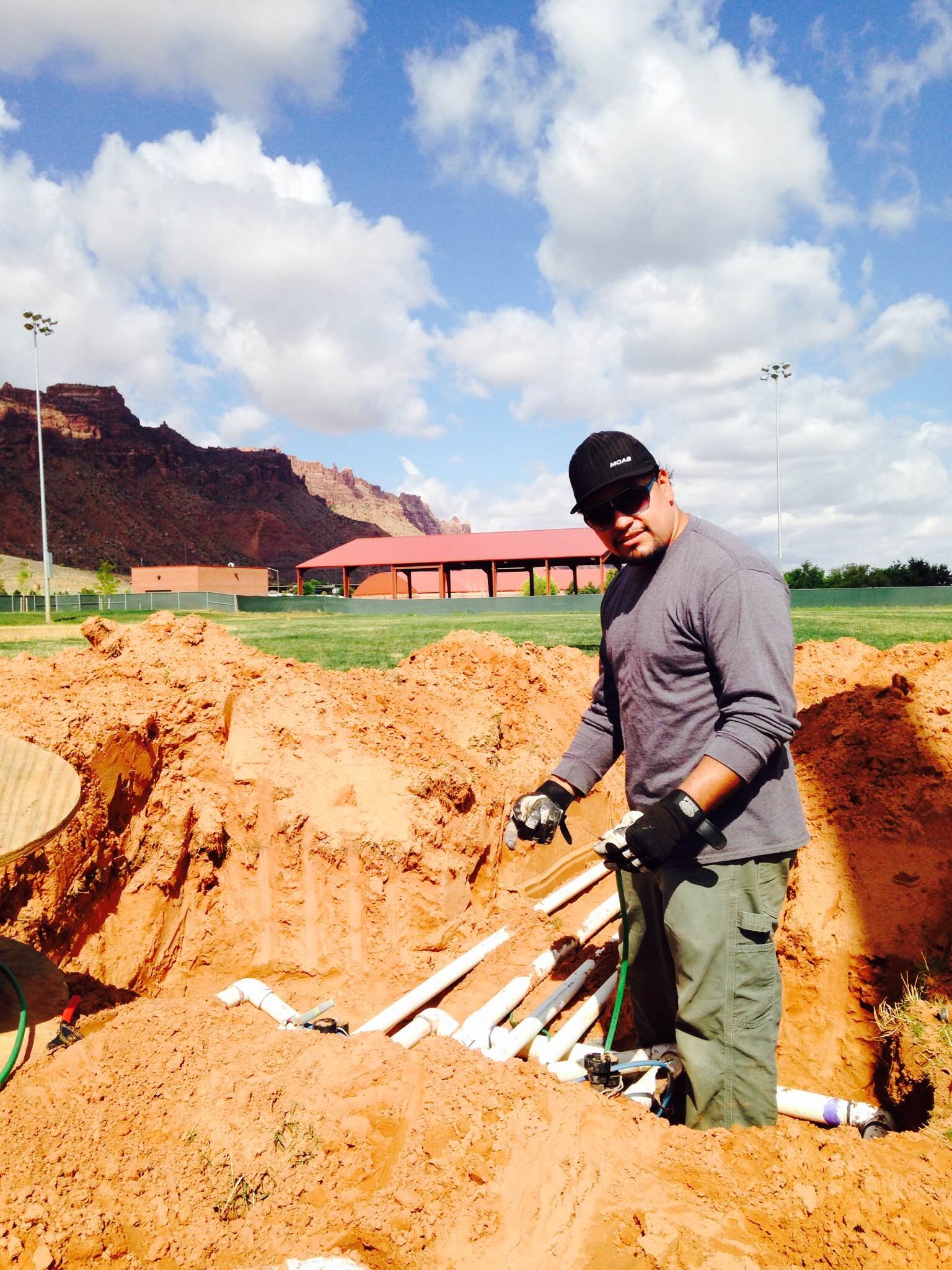The Grand County Recreation Special Service District is in belt-tightening mode.
Its share of funding has declined significantly this year from last year’s previous highs, with mineral lease money down by more than 50 percent, according to district treasurer and Grand County Council liaison Chris Baird.
Faced with the possibility of a smaller budget, Baird and district board chair Kathy Wilson said the district will likely focus on maintaining its existing obligations. Those include the Old Spanish Trail Arena, the Grand Center, the Moab Recreation and Aquatic Center, and the new soccer and baseball fields next to the arena.
According to Baird, the district received $634,000 in mineral lease monies last year, while this year it is on track to receive $290,000. Baird added that it was “just a prediction,” and said it’s too soon to have certainty about what its budget will be.
Established in 1988, the Rec District is an “umbrella organization” designed to coordinate the activities of recreation groups. Supporting a broad range of recreation-related programs and facilities, the district helps serve community members of all ages and with a wide variety of interests.
“(It) makes our community more attractive for people who live here,” Wilson said.
The district’s first big project was building the Old Spanish Trail Arena. The district has since facilitated the construction of the Grand Center and the Moab Recreation and Aquatic Center.
It also offers financial support to sports activities for younger children in the area.
“We fund sports teams that aren’t funded by the school district,” Baird said. “The Rec District has an interlocal agreement with the city of Moab, and we pay a part of the city’s programming.”
In addition, the district administers a grant program for activities that serve the public and are oriented toward recreation, Baird said. Past recipients of the grant include the Canyonlands PRCA Rodeo Club, Canyonlands Field Institute, Utah State University’s 4H Club, the Interact Clubhouse, BEACON, Ride with Respect, and the Youth Garden Project, among others.
This year, however, it’s unclear if the district will be able to set aside funding for the program.
“Last year, we probably had our highest revenue year of all time,” Baird said. “(But this year) mineral lease money is down by over fifty percent. We might not have any grant program this year.”
Work continues on ball fields
The new ball fields were built because Grand County’s capital facilities plan identified them as needed, and board members also saw the potential benefit. Mike Steele is a past board member who helped develop the ball fields.
“We’ve been trying to get that facility put together for 12 or 15 years,” he said. “But other things took priority.”
“We tried to diversify and get something for everybody in the county,” he added. “It was one of the final pieces of our puzzle.”
Steele said that the baseball fields downtown are not full-sized, and home-run hits can pose a risk to cars parked nearby.
“Adults are playing under the lights, and kids in the heat of the day,” he said. “The OSTA ball fields will be for adults … and let kids have the downtown fields.”
The construction of the soccer and baseball fields has posed some challenges. One issue has been getting enough water onto the field to grow grass. According to both Wilson and Baird, the district has been using a mix of Ken’s Lake water and culinary water. The sprinkler system has had some malfunctions, but the main problem, according to Baird, is that “the pressure that is coming into the (Old Spanish Trail Arena) isn’t sufficient.”
“We’re looking at tying into the irrigation system at a higher pressure point,” he said.
There is a well on the property, but Wilson said it has not been used in years.
“It needs to be redone, but it’s quite an expensive undertaking,” she said. “It’s on hold.”
Wilson added that the district is looking at ways to limit its use of culinary water.
But water hasn’t been the only setback. There were also some problems with the initial design that were not discovered until after their construction. After paying $2,283,717 to the contractor for the new ball fields – $923,748 of which came from a grant from the Utah Permanent Community Impact Fund Board (CIB) – the field still needed more work to be functional.
“I wasn’t satisfied with our end result out there,” said Steele, who has continued to be involved with the ball fields project even after the completion of his board term. “We’re having the contractor redo some things to make it right.”
This includes fixing some drainage issues, and relocating some irrigation equipment that would be in the way of players.
Steele reported that there was a dispute between the district and the contractor over the ball fields’ issues, but that the district ultimately chose to resolve the problems by putting in a change order, for which the district approved $118,000. Steele said that a legal battle would have been costly, and that the mistakes were partly because the district “didn’t look closely enough at the plans.”
Both Steele and Baird expressed confidence that the change order would resolve the ball fields’ problems. Construction is currently in progress, and Baird said that the fields would be used for the Scots on the Rocks Moab Celtic Festival in November.
“I think it’s going to be next year before the grass is ready (for sports)” Baird said. “Hopefully it will relieve the crowding on Moab’s ball fields.”
“It’s going to be really nice,” Steele said.
Mineral lease money down by more than 50 percent
Last year, we probably had our highest revenue year of all time … (But this year) mineral lease money is down by over fifty percent. We might not have any grant program this year.




